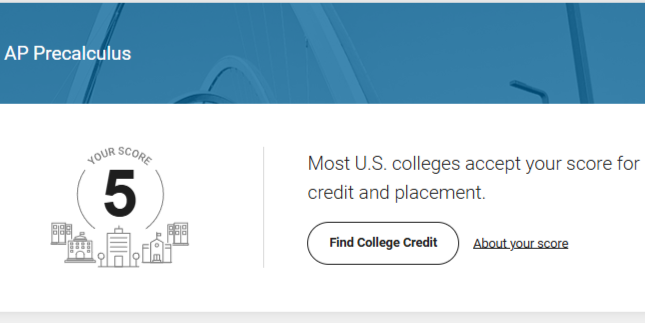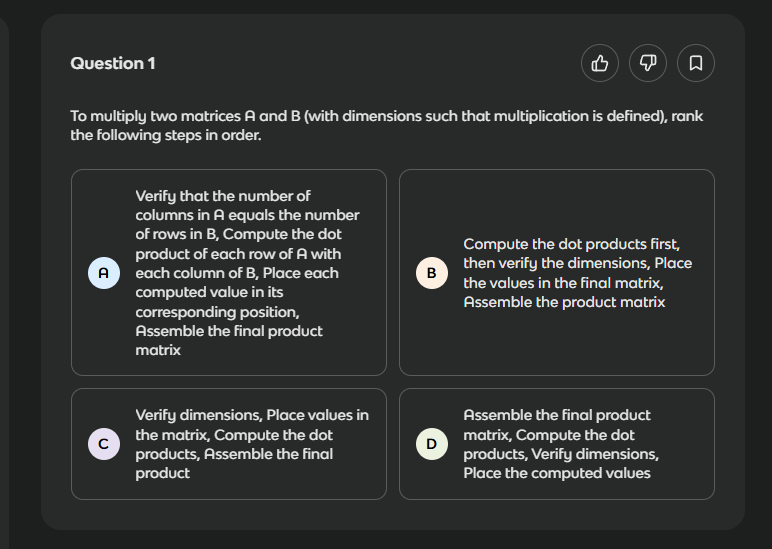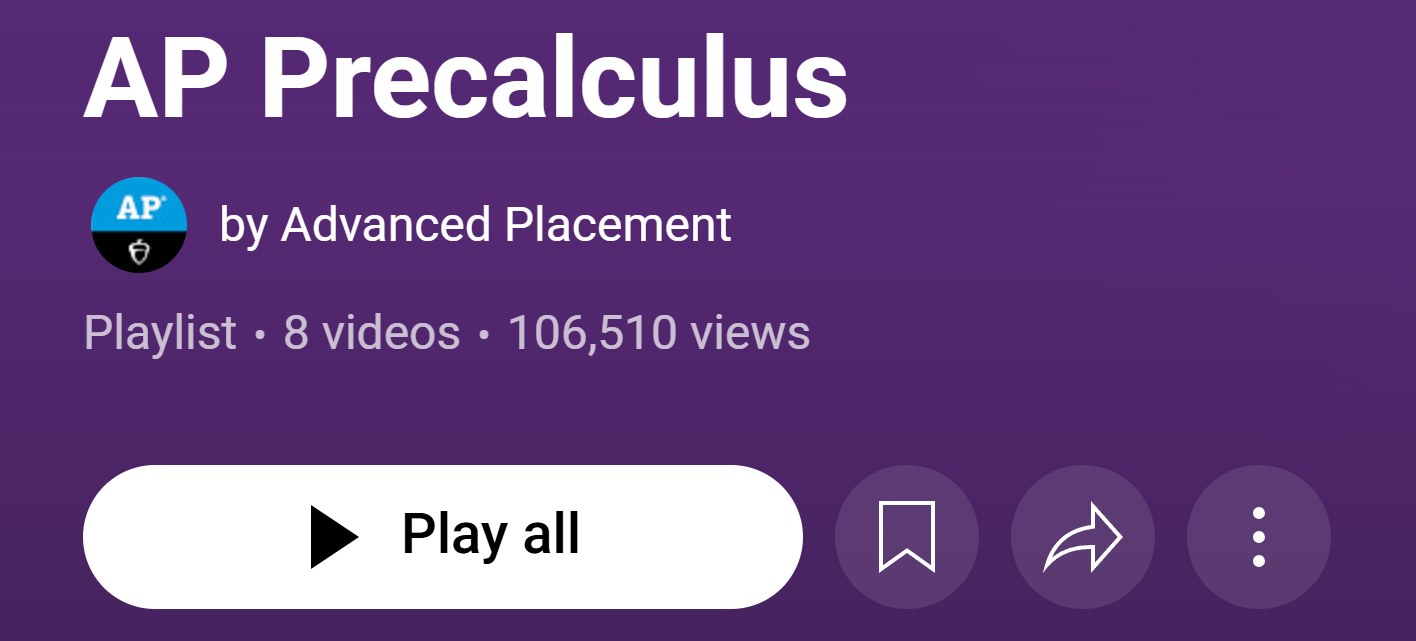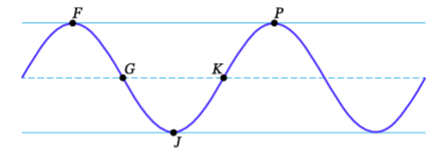How to Get a 5 on AP Precalculus
Tips, tricks, resources, and the exact study plan that got me an A+ and a 5 on AP Precalc freshman year
How to Get a 5 on AP Precalculus
You can score a 5 on AP Precalculus with ease, and this guide tells you exactly how to do that. AP Precalc isn’t that bad of a class, and the exam is relatively easy. Of the 4 units, only content from 3 of them is tested on the exam. It gives you a better algebra and trig foundation for AP Calculus and other advanced math courses.
If you want to get an A in your class and a 5 on the exam, you’re in the right place.
This article is meant to be a fairly comprehensive guide that, if followed properly, will substantially increase your preparedness for the Advanced Placement Precalculus examination. However, I cannot guarantee any single result on your classwork and AP exam. Feel free to contact me if you have any questions, feedback, or want some more help with AP Precalc.
All of these tips, tricks, and resources helped me get this score, a 97% average in the class, and a 95% on my final.
Table of Contents
This is a pretty long article, so here is a table of contents for your convenience.
- Understanding the Course & Exam - Jump
- Units of Study
- The Exam
- The Curve
- Resources I Used - Jump
- Flipped Math
- Knowt
- And More…
- My Ultimate AP Precalc Study Plan - Jump
- Overall Breakdown
- Studying Per Unit
- Final Review / How to Cram
- Tips to Ace AP Precalc - Jump
- General Tips
- FRQ Breakdowns
- Using Your Scrap Paper
- Final Thoughts - Jump
- You Got This!
- Contact Me
- More AP Guides - Jump
- AP US History
- AP Computer Science Principles
Understanding the Course & Exam
Units of Study
This course is broken up into 4 units, one of which isn’t even tested on the AP exam. The unit divisions are pretty logical, and cover subjects that are relatively unrelated. You shouldn’t have a problem with confusing formulas or concepts between units
Unit 1: Polynomial and Rational Functions - 30 to 40% of the exam
- 1.1: Change in Tandem
- 1.2: Rates of Change
- 1.3: Rates of Change in Linear & Quadratic Functions
- 1.4: Polynomial Functions & Rates of Change
- 1.5: Polynomial Functions & Complex Zeros
- 1.6: Polynomial Functions & End Behavior
- 1.7: Rational Functions & End Behavior
- 1.8: Rational Functions & Zeros
- 1.9: Rational Functions & Vertical Asymptotes
- 1.10: Rational Functions & Holes
- 1.11: Equivalent Representations of Polynomial & Rational Expressions
- 1.12: Transformations of Functions
- 1.13: Function Model Selection & Assumption Articulation
- 1.14: Function Model Construction & Application
Unit 2: Exponential and Logarithmic Functions - 27 to 40% of the exam
- 2.1: Change in Arithmetic & Geometric Sequences
- 2.2: Change in Linear & Exponential Functions
- 2.3: Exponential Functions
- 2.4: Exponential Function Manipulation
- 2.5: Exponential Function Context & Data Modeling
- 2.6: Competing Function Model Validation
- 2.7: Composition of Functions
- 2.8: Inverse Functions
- 2.9: Logarithmic Expressions
- 2.10: Inverses of Exponential Functions
- 2.11: Logarithmic Functions
- 2.12: Logarithmic Function Manipulation
- 2.13: Exponential & Logarithmic Equations & Inequalities
- 2.14: Logarithmic Function Context & Data Modeling
- 2.15: Semi-log Plots
Unit 3: Trigonometric and Polar Functions - 30 to 35% of the exam
- 3.1: Periodic Phenomena
- 3.2: Sine, Cosine, & Tangent
- 3.3: Sine & Cosine Function Values
- 3.4: Sine & Cosine Function Graphs
- 3.5: Sinusoidal Functions
- 3.6: Sinusoidal Function Transformations
- 3.7: Sinusoidal Function Context & Data Modeling
- 3.8: The Tangent Function
- 3.9: Inverse Trigonometric Functions
- 3.10: Trigonometric Equations & Inequalities
- 3.11: The Secant, Cosecant, and Cotangent Functions
- 3.12: Equivalent Representations of Trigonometric Functions
- 3.13: Trigonometry & Polar Coordinates
- 3.14: Polar Function Graphs
- 3.15: Rates of Change in Polar Functions
My favorite trig function is arcsecant
Unit 4: Functions Involving Parameters, Vectors, and Matrices - Not assessed on the exam
- 4.1: Parametric Functions
- 4.2: Parametric Functions Modeling Planar Motion
- 4.3: Parametric Functions & Rates of Change
- 4.4: Parametrically Defined Circles & Lines
- 4.5: Implicitly Defined Functions
- 4.6: Conic Sections
- 4.7: Parametrization of Implicitly Defined Functions
- 4.8: Vectors
- 4.9: Vector-Valued Functions
- 4.10: Matrices
- 4.11: The Inverse and Determinant of a Matrix
- 4.12: Linear Transformations & Matrices
- 4.13: Matrices as Functions
- 4.14: Matrices Modeling Contexts
Mathematical Practices
AP Precalc focuses on three main skills that students practice throughout the year. You’ll see these skills throughout all four units.
Procedural and Symbolic Fluency: Using algebra to manipulate and change functions, equations, and expressions. - 39 to 48% of the exam
Multiple Representations: Translating information into different forms (ie. exponential to logarithmic). - 20 to 27% of the exam
Communication and Reasoning: Describing mathematical concepts in precise ways and justifying conclusions. - 32 to 39% of the exam
The Exam
The exam lasts 3 hours, which is more like 3.5 - 4 hours depending on your school’s test day procedures. It is a hybrid exam, meaning there are both digital and written questions.
Section 1: 40 Multiple Choice Questions (MCQs)
Part A
- 28 questions
- 80 minutes
- 43.75% of your score
- No calculator
- 2-3 minutes per question
- If you spend more than 3.5 minutes on a question, flag it and move on
Part B
- 12 questions
- 40 minutes
- 18.75% of your score
- Graphing calculator
- ~3 minutes per question
- If you spend more than 4 minutes on a question, flag it and move on
10 Minute Break:
Grab some chips or some water, and get ready for a whole lot of writing on paper (how scary 😱).
Section 2: 4 Free Response Questions (FRQs)
Part A
- 2 questions with 3 parts each
- 30 minutes
- 18.75% of your score
- Graphing calculator
- 15 minutes per question
- 5 minutes per each part (A), (B), (C)
- If you spend more than 7 minutes on a part, flag it and move on
Part B
- 2 questions with 3 parts each
- 30 minutes
- 18.75% of your score
- No calculator
- 15 minutes per question
- 5 minutes per each part (A), (B), (C)
- If you spend more than 7 minutes on a part, flag it and move on
Remember that it’s better to write something and be completely wrong than to write nothing.
The Curve
Some students think that, just to get a 5, they have to get a 90% or even higher on the exam. This is untrue. While you should shoot to get as high of a raw score as you can, you really only need a ~67% to get a 5. There are tons of AP Precalc score calculators out there, and they all generally agree that a 67% is a 5. Here is the rough breakdown:
| Raw Score | AP Score | What does this mean? | % Received Score (2025) |
|---|---|---|---|
| 67-100% | 5 | ✅ Excellent! Most colleges will accept this. | 28% |
| 55-66% | 4 | 🎉 Great job! Some colleges will accept this. | 26% |
| 42-54% | 3 | 👍 Nice! A few colleges will accept this. | 27% |
| 31-41% | 2 | 😐 You’ll have a better foundation for college. | 11% |
| 0-30% | 1 | 🧠 You challenged yourself with college level coursework. | 8% |
Fun fact: The average score on the 2025 AP Precalc exam was not a 3. Mathematically, it was a 3.55.
I would recommend shooting for a 70-75% to be solidly in the 5 range. Try to get at least a 21/28 on MCQ part A, 9/12 on MCQ part B, and a 4/6 on each FRQ. You can adjust these numbers as needed if you’re better at multiple choice questions or writing.
Resources I Used
This is the list of the only resources I used in preparation for AP Precalc, and my review of them. This list is in no particular order.
Flipped Math (Website)
My rating: ⭐⭐⭐⭐⭐
Cost: Free
If you only use one resource to study for AP Precalculus, this is it. A comprehensive and free course that includes videos and pages of practice problems for every single sub topic, and unit reviews. The videos are detailed and provide useful information without any of the fluff. I did each of the packets in preparation for the AP exam, and I recorded the questions I got wrong so I knew what concepts to review later.
Michael Porinchak (YouTube Channel)
My rating: ⭐⭐⭐⭐☆
Cost: Free
Mr. Porinchak’s videos were also useful as a different way of getting information. They covered essentially the same information as Flipped Math, but with less practice problems. I found his unit review videos really useful when doing my final reviews.
Knowt AP Precalculus Practice Room (Website)
My rating: ⭐⭐☆☆☆
Cost: Free
I normally glaze on Knowt, because it’s a super useful resource for study guides, flashcards, and more. It has more features for free than it’s main competition (Quizlet), and I love the Learn and Spaced Repetition features. However, the AP Precalc “Practice Room” for Knowt was not it. All of the Knowt practice room questions are AI-generated and not AP-style, and often have mistakes or information that is not relevant to the exam. Also, the formatting of the practice questions leaves something to be desired.
This isn’t a concept that will be tested on the AP exam, and is the first question when I opened the practice room
Released FRQs (Document)
My rating: ⭐⭐⭐⭐⭐
Cost: Free
These are Free Response Questions (FRQs) from previous exams released by the College Board. Each year, the FRQs on AP Precalc follow the same format (more on that later), so I recommend doing as many of these as you can to familiarize yourself with the format. If you do, you’ll breeze through the FRQs on exam day.
College Board YouTube Videos (YouTube Playlist)
My rating: ⭐⭐⭐⭐☆
Cost: Free
These concise videos from real AP teachers explain the key concepts of AP Precalculus in a fairly engaging way. If you want to know what the College Board wants you to know for the exam, watch these videos. The only downside is that the videos do not cover every single topic, just the key points.
My Ultimate AP Precalc Study Plan
I studied for ~20 hours for the AP Precalculus exam, which I think is about the right amount. If you’ve been paying attention in class all year and have a good grasp on the concepts, anything more will burn you out. AP Precalc, in my opinion, is not a class that covers a large amount of content. Here is my exact study schedule, broken down by unit.
Overall Breakdown
Because AP Precalc only has 3 units, and they are tested roughly equally on the exam, I spent an equal amount of time studying for each unit.
I started each unit by watching Michael Porinchak’s unit review video and the College Board’s unit review video. Then, I would do all of the Flipped Math packets for that unit. Finally, I would do some writing practice using released FRQs.
Studying Per Unit
Unit 1: 6 hours
- 1 hour of review videos
- 4 hours of Flipped Math packets
- 1 hour of writing practice
Unit 2: 6 hours
- 1 hour of review videos
- 4 hours of Flipped Math packets
- 1 hour of writing practice
Unit 3: 6 hours
- 1 hour of review videos
- 4 hours of Flipped Math packets
- 1 hour of writing practice
Final Review
I spent the last 4 days before the AP exam brushing up on concepts (especially formulas I kept forgetting) and doing some final practice. I wouldn’t recommend cramming 4 days before the exam, but if you do, follow this framework.
4 Days Before: Unit 1
- Rewatch Michael Porinchak’s AP Precalc Unit 1
- Flipped Math Unit 1A and Unit 1B Reviews
- 2 College Board Released FRQs
3 Days Before: Unit 2
- Rewatch Michael Porinchak’s AP Precalc Unit 2
- Flipped Math Unit 2A and Unit 2B Reviews
- 2 College Board Released FRQs
2 Days Before: Unit 3
- Rewatch Michael Porinchak’s AP Precalc Unit 3
- Flipped Math Unit 3A and Unit 3B Reviews
- 2 College Board Released FRQs
1 Day Before: Rest
- You’ve studied for the exam, and cramming the day before will not help
- Eat a good dinner, play a video game or watch some TV, and get to sleep early
Tips to Ace AP Precalc
By the time you’ve reviewed all the content, success on the AP Precalculus exam comes down to execution. The test is long and boring, the questions can be tricky, and the format is different from your everyday class quizzes. Here are the strategies that helped me stay calm, finish on time, and pick up as many points as possible.
General Tips
These tips are important for any math class, especially AP Precalc.
Actually Pay Attention
I cannot emphasize this enough. Even when class seems boring and you’re falling asleep, pay attention. It’s a tip that seems so simple and not worth mentioning, but a good 50% of my class (myself included, sometimes) would be staring at our phones playing a video game or watching reels at any given time. The kids who did that would say “It’s all good, I’ll do the work at home,” and then consistently fail our entrance tickets and tests. If you pay attention and are engaged in the class, you will do better. In addition, your teacher will like you more, giving you a better chance at getting a grade rounded up. (not that you’ll need that with this guide)
Do All The Practice Problems
If your teacher assigns optional practice problems, do them. Just taking 15 minutes to practice your skills in addition to your homework will help you tremendously. You can find great practice problems online (more on that later), or ask your teacher if they have additional resources. We would be assigned DeltaMath reviews before quizzes and tests, and my teacher would show us the data: the percentage you completed of the review and the percentage students got on the test were often remarkably similar. Doing lots of practice problems helps cement the knowledge in your mind.
This might have been “doing too much”, but I got a 100% on that logs test
Remember the Formulas
You might think, “Oh, I’ll just derive formulas on the test instead of memorizing them.” While that does work (I did that for some of the trig identities), it’s always better to know formulas off the top of your head. Make flashcards and quiz yourself, or just write down the formulas on a post-it note and read them over every day. Doing practice problems will also help you remember formulas better, as you’re more comfortable using them.
Take Notes on Paper
Taking notes is important, and for a math course, taking them on paper is so much easier. Get a notebook and use that for the year. This makes it easier to explain concepts, draw diagrams, and have a reference for you to review while studying. Don’t rely on looking back at old assignments or papers to remember concepts.
Use Your Calculator The AP Precalculus exam allows a graphing calculator for only half of the multiple-choice and FRQs, so you need to know both how to use it efficiently and how to solve without it.
For questions with the calculator, you can use your calculator in one of two ways:
- Solve: Some questions are much easier to solve by inputting everything in the calculator and having Desmos do the work for you. Try to use Desmos for some practice problems and just mess around with it so that you know how to use it effectively.
- Check: Some problems are easier solved manually (especially trig identities), but you can check them by inputting equations in Desmos and seeing if they overlap or if the value you found was correct.
Free-Response Questions
The four FRQs are roughly the same each year in structure. If you practice enough, they’ll be super easy. Each FRQ is broken into parts (A), (B), and (C), which can further be broken down into parts (i), (ii), and (iii). This means that each FRQ is really 4-6 questions. Attempt each part of each question - you earn points on each part independently.
FRQ 1: Function Concepts
- Graphing calculator allowed
- Shows 2 different functions (non-sinusoidal) in 2 different formats (table, graph, or equation)
- You could be asked to:
- Create and evaluate a composite function
- Inverse a function
- Find zeros/solutions
- Find limits
- Determine and explain the best function type
- Find when a function equals a specific value
- Covers content from Units 1 and 2
- This question does not have a real-world context
- Has subparts A-i, A-ii, B-i, B-ii, C-i, C-ii
This is an example of what you could be given for FRQ 1
FRQ 2: Modeling a Non-Periodic Context
- Graphing calculator allowed
- Gives you information that will be used to create a non-sinusoidal function
- You could be asked to:
- Write an equation for the data in various forms
- Find the average rate of change
- Estimate values using the average rate of change
- Explain the differences between that estimate and the actual value
- Explain errors in the model
- Find minimums or maximums
- Restrict the function’s domain
- Covers content from Units 1 and 2
- This question does have a real-world context
- Has subparts A-i, A-ii, B-i, B-ii, B-iii, C
This is an example of what you could be asked for FRQ 2
FRQ 3: Modeling a Periodic Context
- No graphing calculator
- Gives you information that will be used to create a sinusoidal function
- You will be asked to:
- Determine possible coordinates in the sinusoidal function
- Write an equation for the sinusoidal function
- Determine if an interval is positive or negative
- Determine if an interval is increasing or decreasing
- Describe concavity and/or rate of change on an interval
- Covers content from Unit 3
- This question does have a real-world context
- Has subparts A, B, C-i, C-ii
This is a diagram from FRQ 3
FRQ 4: Symbolic Manipulations
- No graphing calculator
- Gives you various equations which you must manipulate
- You may be asked to:
- Solve a function at a specific value (sinusoidal or non-sinusoidal)
- Apply the rules of logarithms to simplify logarithmic functions
- Apply the rules of exponents to simplify exponential functions
- Apply trigonometric identities to simplify sinusoidal functions
- Find the zeros/solutions of a function (sinusoidal or non-sinusoidal)
- Covers content from Units 2 and 3
- This question does not have a real-world context
- Has subparts A-i, A-ii, B-i, B-ii, C
I was not able to solve this question from FRQ 4, try it yourself!
Using Your Scrap Paper
You should be provided with 5 pieces of scrap paper (front and back) for this exam. I used almost all of it, and was very organized. Having your work in neat boxes as opposed to all over the paper helps A LOT when you go back to check your work and search for mistakes.
MCQs:
- Use 2 full pages of paper
- Fold each one in half along the shorter side (“hotdog style”)
- Then, fold 5 equal parts along the longer side (try your best!)
- You can draw lines to differentiate the boxes if you would like
- Label the first 28 boxes 1-28, and then label the rest 1-12
- 10 boxes per side * 2 sides * 2 pages = room for 40 questions
FRQs:
- Use 2 full pages of paper
- Fold each one into thirds along the longer side
- Label each side A-C
- Each side of paper is for a different FRQ
This might seem pointless, but it’s something to do while you wait for the test to start, and you’ll thank yourself later when you are checking your work.
Final Thoughts
AP Precalc isn’t too challenging of a course, but it can be hard to see the real world applications of what you learn. This makes a lot of students “lock out” and not pay attention to the class. If you put in the work and follow this guide, I’m confident that you can get an A in your class and a 5 on the exam.
The key is repetition and consistency. If you keep working hard, even when it seems like you can’t do anything right or don’t remember anything, the class will become much easier.
On exam day, just have faith and confidence. Stressing an hour before the exam won’t get you anywhere. Get a good night’s sleep, eat a good breakfast, pray for a couple of minutes, and be ready to take the AP Precalc exam. You got this.
If you need any more help, or have questions or comments, feel free to let me know by contacting me. I’m happy to help. If this post helped you out, consider sharing it with your friends and classmates. Enjoy AP Precalculus!
More AP Guides
I took 3 AP classes freshman year: AP US History, AP Precalculus, and AP CS Principles. I scored a 5 on all three of them, earning me the AP Scholar award.
If you want to do the same thing, feel free to check out my other guides.
- AP US History
- AP Precalculus
- AP CS Principles - Coming Soon








